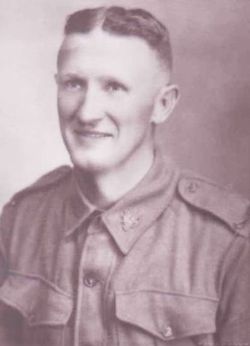Enlisted:--- 25 June 1940, Wagga Wagga, New South Wales
Last Rank: ---Private
Last Unit:--- 2nd/19th Infantry Battalion
Born:--- Batlow, New South Wales, 26 February 1907
Home Town:--- Adaminaby, Snowy River, New South Wales
Schooling:--- Not yet discovered
Occupation:--- Shopkeeper's assistant
Died:--- Killed in Action, Malaya, 22 January 1942, aged 34 years
Died Parit Sulong Massacre 22/1/1942 Wounded and in Convoy when killed.
********************************************************************
On 23 January 1942, the Parit Sulong Massacre in Johor, Malaya (now Malaysia) was committed against Allied soldiers by members of the Imperial Guards Division of the Imperial Japanese Army. A few days earlier, the Allied troops had ambushed the Japanese near Gemas and blown up a bridge there.
During the Battle of Muar, members of both the Australian 8th Division and the 45th Indian Infantry Brigade were making a fighting withdrawal, when they became surrounded near the bridge at Parit Sulong. They fought the larger Japanese forces for two days, until they ran low on ammunition and food. Able-bodied soldiers were ordered to disperse into the jungle, the only way they could return to Allied lines. About 150 Australians and Indians were too seriously injured to move, and their only option was to surrender. The Japanese, enraged by the losses they had suffered in the severe fighting over the previous week, massacred a group of 163 Australian and Indian wounded left behind at Parit Sulong before sunset on 22 January 1942. Only two men survived.
The Imperial Guards kicked and beat the wounded prisoners of war with their rifle butts. At least some of them were tied up with wire in the middle of the road and machine-gunned. The Japanese then poured petrol over the bodies, set them alight, andafter their incineration...systematically run over, back and forwards, by Japanese driven trucks." Anecdotal accounts by local people also reported POWs being tied together with wire and forced to stand on a bridge, before a Japanese soldier shot one of them, causing the rest to fall into the Simpang Kiri river and drown.
Enlisted:--- 25 June 1940, Wagga Wagga, New South Wales
Last Rank: ---Private
Last Unit:--- 2nd/19th Infantry Battalion
Born:--- Batlow, New South Wales, 26 February 1907
Home Town:--- Adaminaby, Snowy River, New South Wales
Schooling:--- Not yet discovered
Occupation:--- Shopkeeper's assistant
Died:--- Killed in Action, Malaya, 22 January 1942, aged 34 years
Died Parit Sulong Massacre 22/1/1942 Wounded and in Convoy when killed.
********************************************************************
On 23 January 1942, the Parit Sulong Massacre in Johor, Malaya (now Malaysia) was committed against Allied soldiers by members of the Imperial Guards Division of the Imperial Japanese Army. A few days earlier, the Allied troops had ambushed the Japanese near Gemas and blown up a bridge there.
During the Battle of Muar, members of both the Australian 8th Division and the 45th Indian Infantry Brigade were making a fighting withdrawal, when they became surrounded near the bridge at Parit Sulong. They fought the larger Japanese forces for two days, until they ran low on ammunition and food. Able-bodied soldiers were ordered to disperse into the jungle, the only way they could return to Allied lines. About 150 Australians and Indians were too seriously injured to move, and their only option was to surrender. The Japanese, enraged by the losses they had suffered in the severe fighting over the previous week, massacred a group of 163 Australian and Indian wounded left behind at Parit Sulong before sunset on 22 January 1942. Only two men survived.
The Imperial Guards kicked and beat the wounded prisoners of war with their rifle butts. At least some of them were tied up with wire in the middle of the road and machine-gunned. The Japanese then poured petrol over the bodies, set them alight, andafter their incineration...systematically run over, back and forwards, by Japanese driven trucks." Anecdotal accounts by local people also reported POWs being tied together with wire and forced to stand on a bridge, before a Japanese soldier shot one of them, causing the rest to fall into the Simpang Kiri river and drown.
Gravesite Details
Private, Australian Infantry. Age: 34.
Family Members
Sponsored by Ancestry
Advertisement
Advertisement














